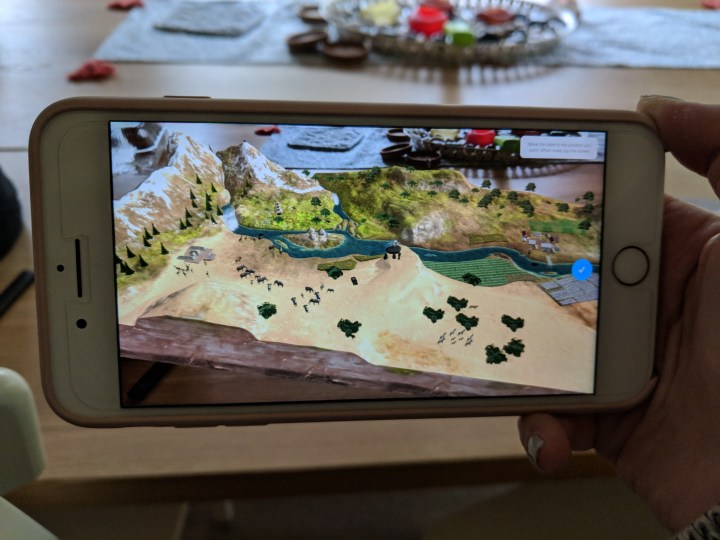
App Attack is a weekly series where we search the App Store and Google Play Store for the best apps of the week. Check out App Attack every Sunday for the latest.
The launch of Apple’s latest 9.7-inch iPad has spawned a variety of new educational apps. This week we have an app that allows you to learn more about the environment straight through your smartphone using augmented reality.
Presented at Apple’s Education event in Chicago, WWF Free Rivers Augmented Reality — available for iOS — places an entire landscape at your kitchen table (or wherever else you prefer). By simply pointing your camera at a flat surface, you’re able to explore an entire world of wildlife, people, and rivers.
After downloading the app, getting started is super simple. All you have to do is find a flat surface that’s well-lit in order for the program to recognize where you’re placing the landscape. The entire scene then appears on the table and you’re able to zoom in, move around, and learn all about nature.
As you discover all the elements, you can tap on each one to get more information. This includes anything from the actual bodies of water to the different animals and people. You’re able to follow along the “water’s journey” as you follow the story through your smartphone.
The interface is easy to navigate by swiping around and tapping on whatever you’d like. Whenever you want to learn about a specific element, a small bubble will appear that provides you with a brief description. By zooming in and moving your smartphone, you can explore all sides of the landscape.
With each scene, you’ll have a various amount of things to see — for instance, I had eight different parts that I could go through before completing the entire run. At the bottom of the app, there’s a counter that that keeps track of how many you’ve found throughout your time on the app. Once you’re done learning about a specific part, simply tap the check mark and the counter will go up.
As I tapped through each sight, I was able to gain insight on actual people — such as “Rice Farmer/Mother,” whose home in the delta becomes increasingly vulnerable when climate changes and sea rise. There’s also another “Farmer” who, in the dry season, plants along the river in the soil that the floods leave behind.
Aside from human figures, I was also able to learn about the historical importance of the rivers for people. For example, one part of the app brings you to the “Chief,” who explains how his ancestors have lived alongside the river for years, relying on the water for not only food, but also for its beauty.
When you continue on through the app, you get to learn more as you go. Other habitats include tropical jungles, the African Savannah, the South Asian deltas, and more. Within each one, you’ll also be able to learn about the river that flows through and how it affects each person and the wildlife around it.
Not only was the experience educational and interesting, but the graphics were great to look at as well. Regardless of whether you pointed it at the floor or a table, the landscapes looked bright and vivid on the display. While I tried it with a smartphone, the larger display on the iPad will only make it look more beautiful and immersive.








